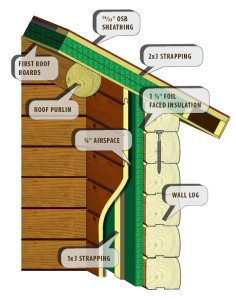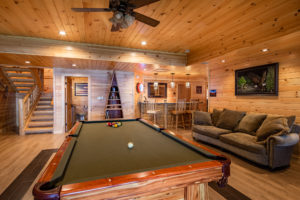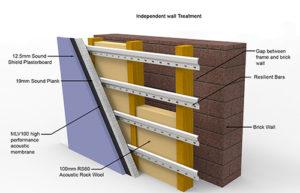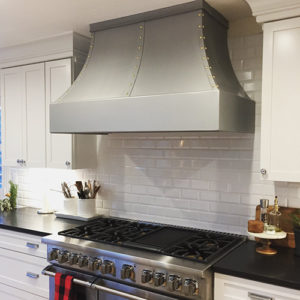 Let’s face it, it’s amazing how noisy our homes can be, especially when everybody’s working, schooling and living at home. Even though we have lots of noisy activities, most Katahdin Cedar Log Home owners don’t think about soundproofing interior walls at all. But with the Energy Envelope System, it’s easy to include extra sound protection from noise outside as well as inside your home.
Let’s face it, it’s amazing how noisy our homes can be, especially when everybody’s working, schooling and living at home. Even though we have lots of noisy activities, most Katahdin Cedar Log Home owners don’t think about soundproofing interior walls at all. But with the Energy Envelope System, it’s easy to include extra sound protection from noise outside as well as inside your home.
Log Walls Have a Sound Dampening Effect
Because Northern White Cedar has a fair amount of air space between the wood fibers, log walls transmit relatively little outside sound. Add to that the insulation of the Energy Envelope System and the outside world is kept at bay.
Pay Attention to Interior Spaces
When designing your Katahdin Cedar Log Home, you’ve probably given lots of thought to layout, size and ceiling heights. But sound is another element that will play a role in your family’s enjoyment of your new log home. Ta ke a moment to think about which areas are adjacent to each other or share walls. Does the master bedroom share a wall with the great room? Is the laundry next to a guest bedroom? Does your home office space open into the television or gaming room?
ke a moment to think about which areas are adjacent to each other or share walls. Does the master bedroom share a wall with the great room? Is the laundry next to a guest bedroom? Does your home office space open into the television or gaming room?
Choose Solid Interior Doors
Solid core doors proved a better sound barrier than hollow core doors. If you’re opting for a sliding barn door style install some seals around the door to provide better soundproofing.
Insert Additional Insulation
In addition to blocking the transfer of heat, insulation also diminishes sound transfer. For interior walls that need extra soundproofing, consider using professionally applied closed cell spray foam insulation. This provides a great sound barrier,  especially in narrower, interior wall spaces.
especially in narrower, interior wall spaces.
Walls Within Walls
For serious soundproofing areas, such as music practice rooms, home recording or broadcasting studios, one way to soundproof is to decouple a layer of interior wall from the framed barrier wall. This can be achieved with offset studs, extra layers of drywall and acoustic sealing glue.
 Scout Sources for Noisy Vibrations
Scout Sources for Noisy Vibrations
Appliances such as kitchen exhaust fans and heat pump exterior units can create noisy vibrations that can travel through walls without extra attention to insulation and sound barriers. When locating the exterior heat pump units, pick areas away from sleeping areas or home offices where noise can be a distraction.
Don’t Forget Floors and Ceilings!
Shared floor and ceilings around music practice rooms and laundry rooms should also have dampening insulation installed. Sound travels in multi-directional ways, so along with walls soundproof ceilings and floors to minimize sound transmission.
It’s important to note that not every interior wall needs to be insulated or soundproofed, just around those spaces where quiet is desired or spaces where unwanted noise is generated.
